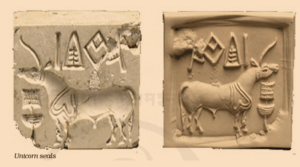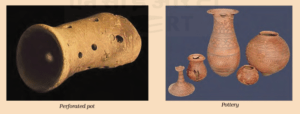The Indus Valley Civilization, which dates back to 3300 BCE, was a highly sophisticated ancient civilization located in what is now modern-day India and Pakistan. One of the most notable aspects of this civilization was its artistic achievements, which were truly ahead of its time. From sculptures to seals, the art forms of the Indus Valley Civilization continue to amaze and inspire people to this day.
Table of Contents
Sculpture
Sculpture was one of the most prominent art forms in the Indus Valley Civilization. The sculptures that have been discovered from this civilization are highly realistic and well-detailed, featuring depictions of people, animals, and deities. Many of the sculptures found in the Indus Valley Civilization were made of bronze, terracotta, and stone, and they showcase the incredible skill and artistry of the ancient people. Some of the most famous sculptures from this civilization include the bronze dancing girl, which is a highly realistic depiction of a young girl dancing, and the steatite seal depicting a bull, which is a symbol of strength and power.

The art of bronze-casting was practiced on a wide scale by the Harappans. Their bronze statues were made using the ‘lost wax’ technique in which the wax figures were first covered with a coating of clay and allowed to dry. Then the wax was heated and the molten wax was drained out through a tiny hole made in the clay cover. The hollow mould thus created was filled with molten metal which took the original shape of the object.
Seal
Another significant art form in the Indus Valley Civilization was seals. These small, round or rectangular pieces of stone or metal were used as a form of identification and were often used to mark goods for trade. The seals from the Indus Valley Civilization are known for their intricate designs, which typically feature images of animals, such as bulls, lions, and elephants, as well as people and other symbols. Some of the seals also feature script, which is believed to be an early form of writing from the Indus Valley Civilization.

It appears that the seals were used as modern-day identity cards.
Pottery
Pottery was another important art form in the Indus Valley Civilization. The pottery from this civilization was highly decorative and was often used for everyday purposes, such as storing food and water. The pottery from this civilization was also used for religious purposes, and many of the pieces feature intricate designs and symbols that were believed to have spiritual significance. Some of the most notable pottery pieces from the Indus Valley Civilization include the painted gray ware and the red ware, which are known for their beautiful designs and intricate patterns.

Beads and Ornaments
The Harappan men and women decorated themselves with a large variety of ornaments. While necklaces, fillets, armlets and finger-rings were commonly worn by both sexes, women wore girdles, earrings and anklets.